https://github.com/phollemans/vertigo
Data visualization software for displaying NetCDF and OPeNDAP earth science data on a 3D sphere
https://github.com/phollemans/vertigo
3d-graphics earth-science java javafx netcdf noaa-coastwatch opendap openjfx scientific-visualization
Last synced: 21 days ago
JSON representation
Data visualization software for displaying NetCDF and OPeNDAP earth science data on a 3D sphere
- Host: GitHub
- URL: https://github.com/phollemans/vertigo
- Owner: phollemans
- Created: 2020-10-06T03:11:04.000Z (about 5 years ago)
- Default Branch: main
- Last Pushed: 2025-03-03T04:53:38.000Z (8 months ago)
- Last Synced: 2025-04-10T04:07:12.581Z (6 months ago)
- Topics: 3d-graphics, earth-science, java, javafx, netcdf, noaa-coastwatch, opendap, openjfx, scientific-visualization
- Language: Java
- Homepage:
- Size: 19.2 MB
- Stars: 11
- Watchers: 2
- Forks: 2
- Open Issues: 0
-
Metadata Files:
- Readme: README.md
Awesome Lists containing this project
README
# Vertigo Project
The CoastWatch Vertigo Project is an earth science data viewing application that reads
data from NetCDF files and OPeNDAP connections and presents the data as coloured
images on a 3D sphere. The goal of the project is to create a way to discover, view,
and use earth science data that is easy and intuitive.
# Screenshots
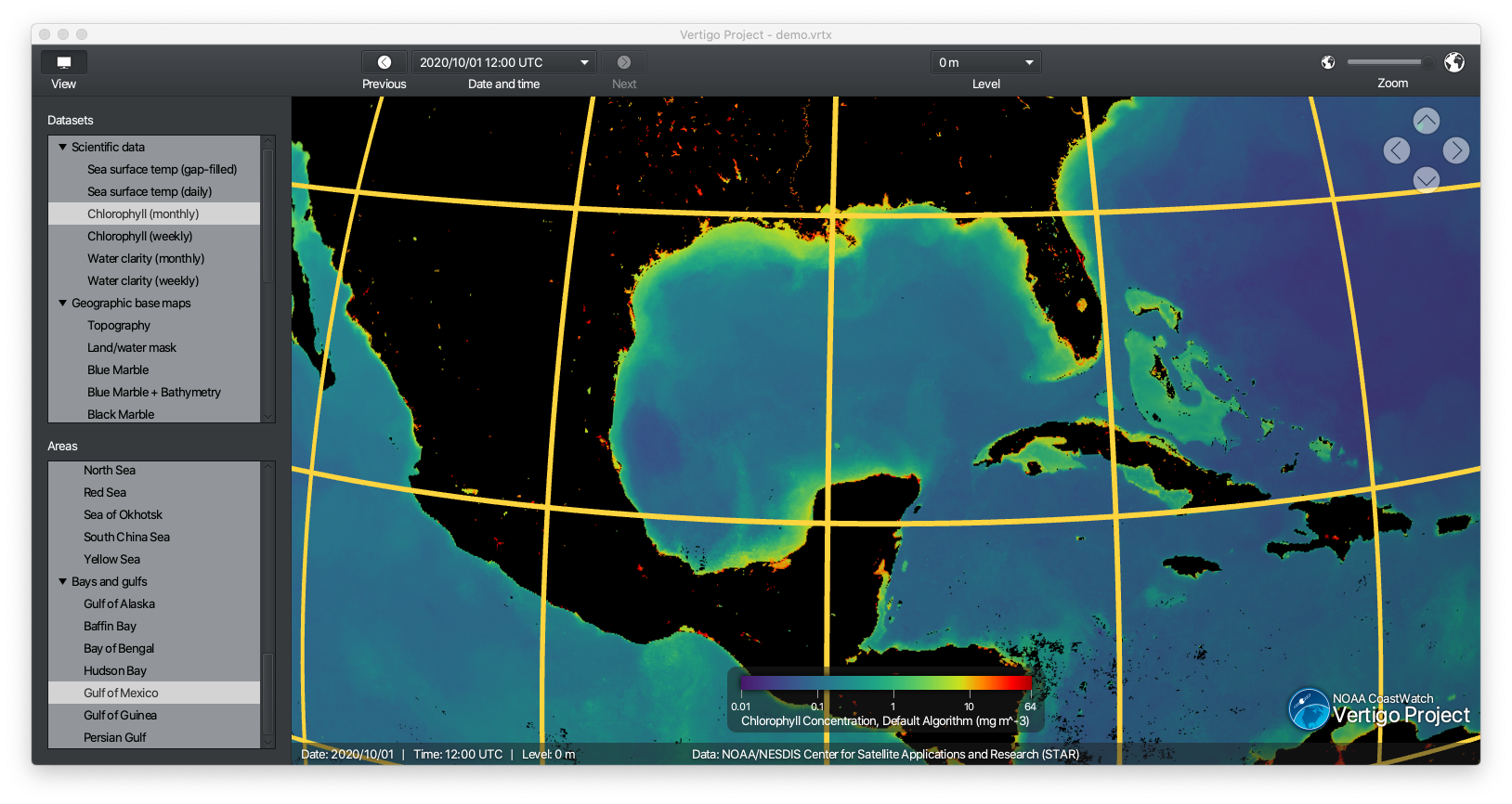
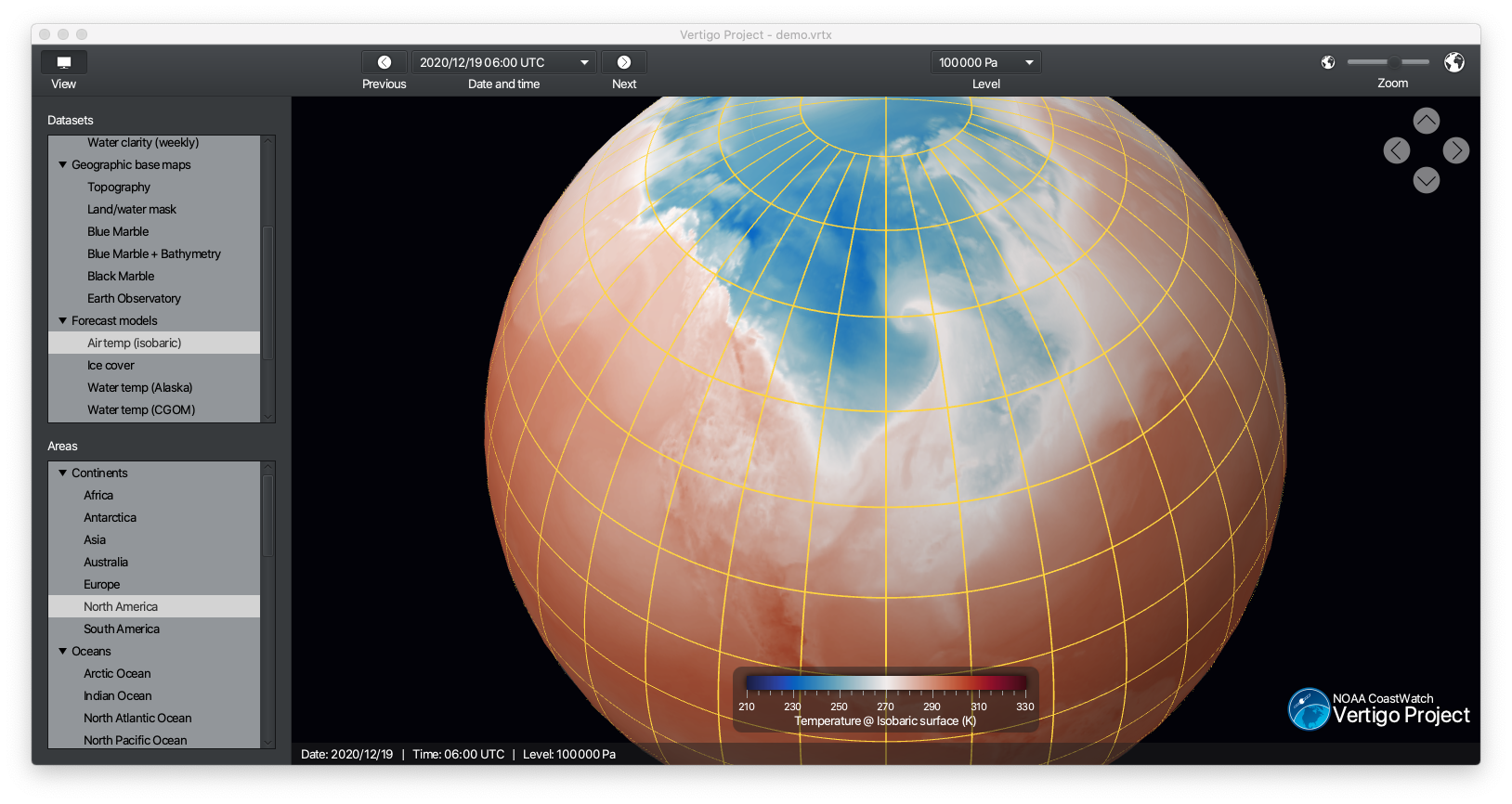
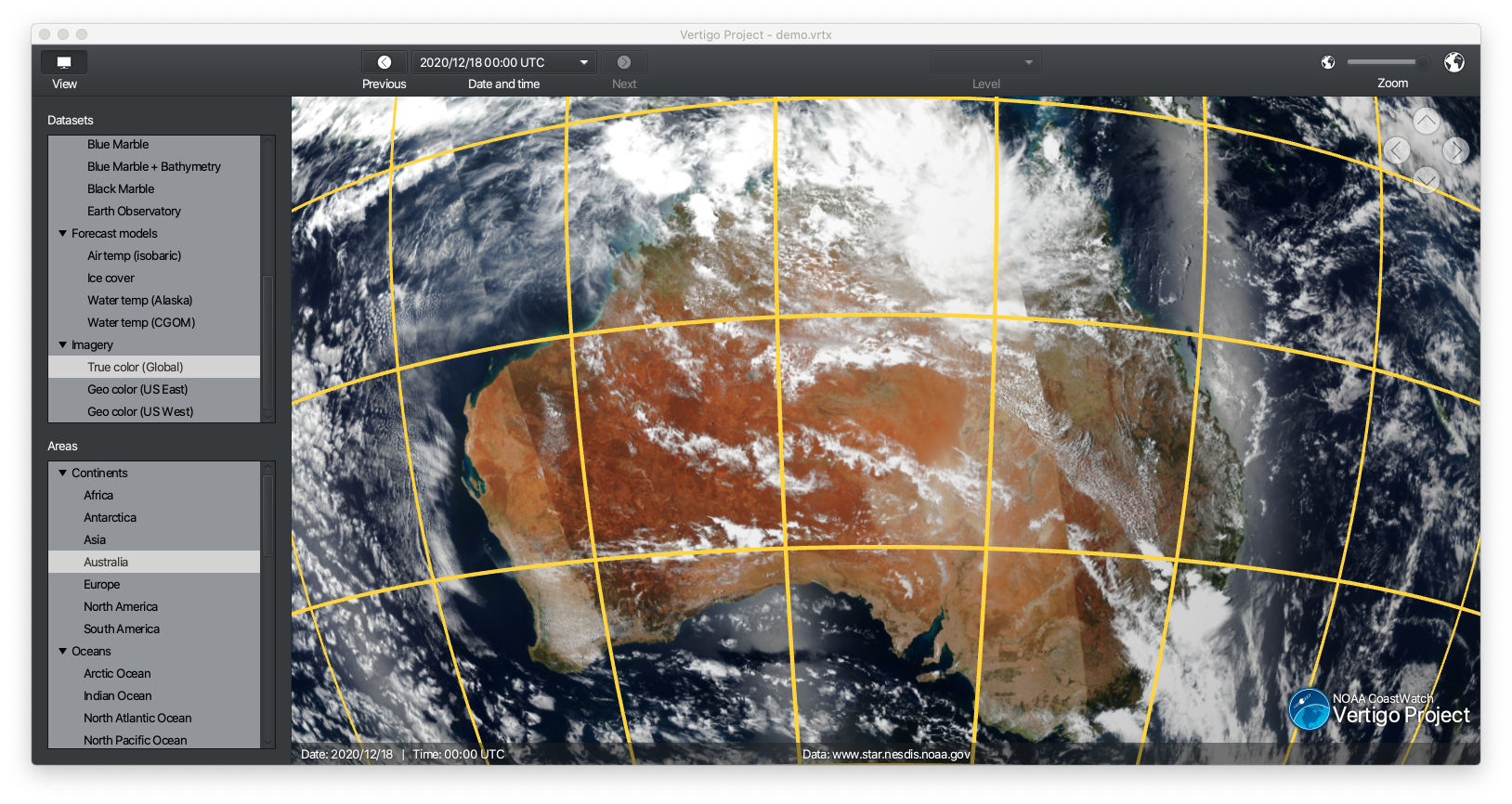
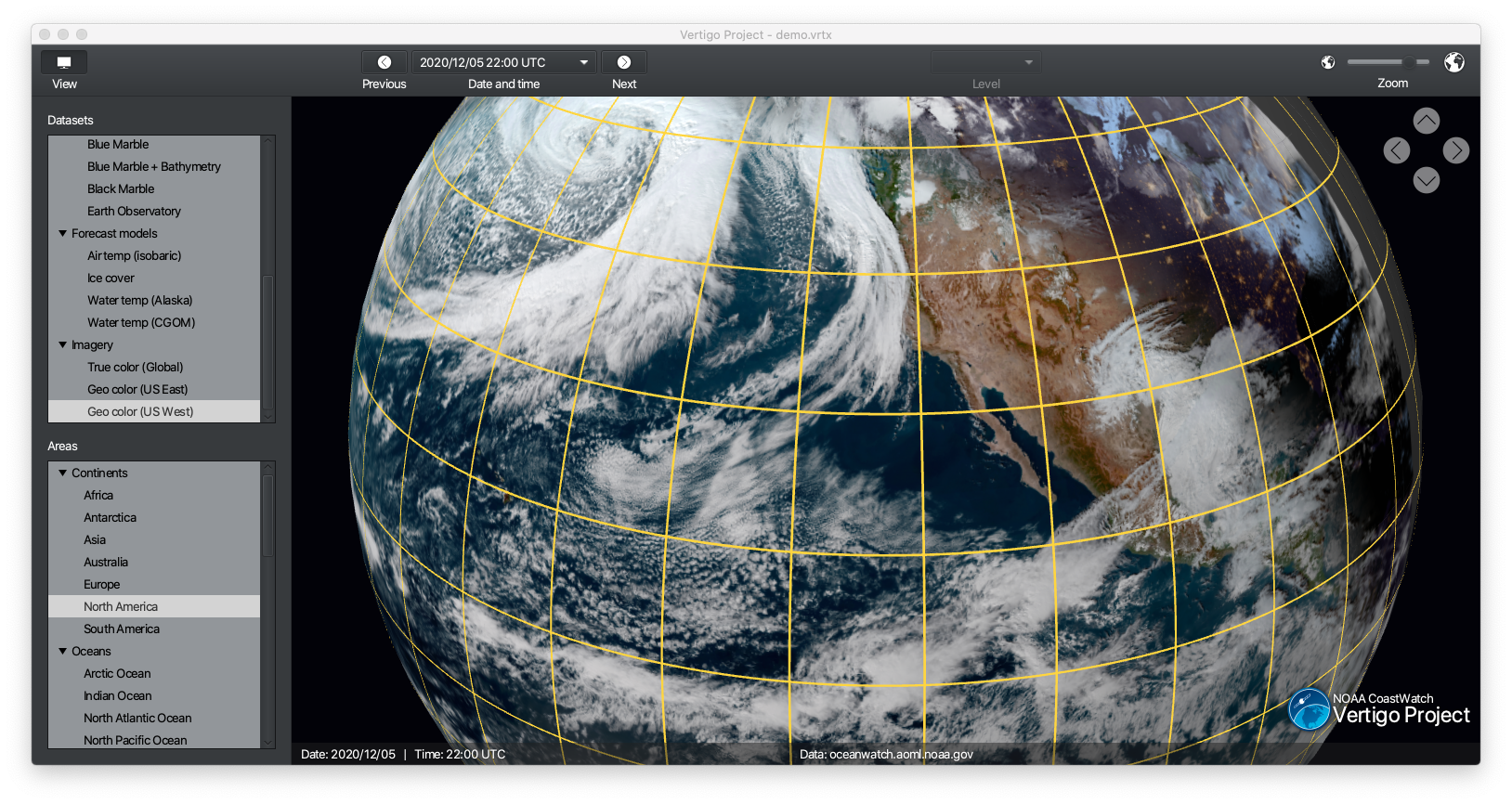
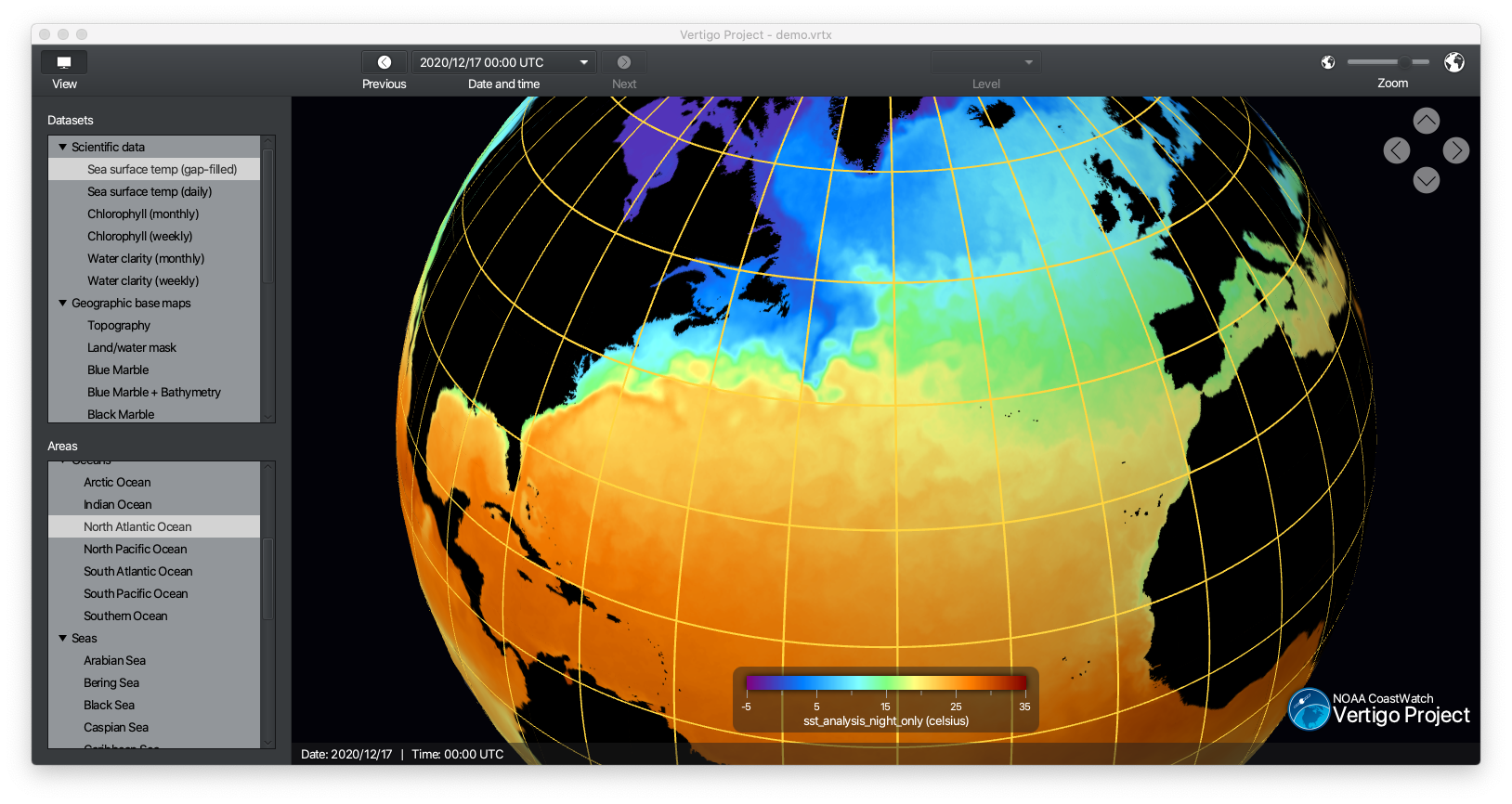
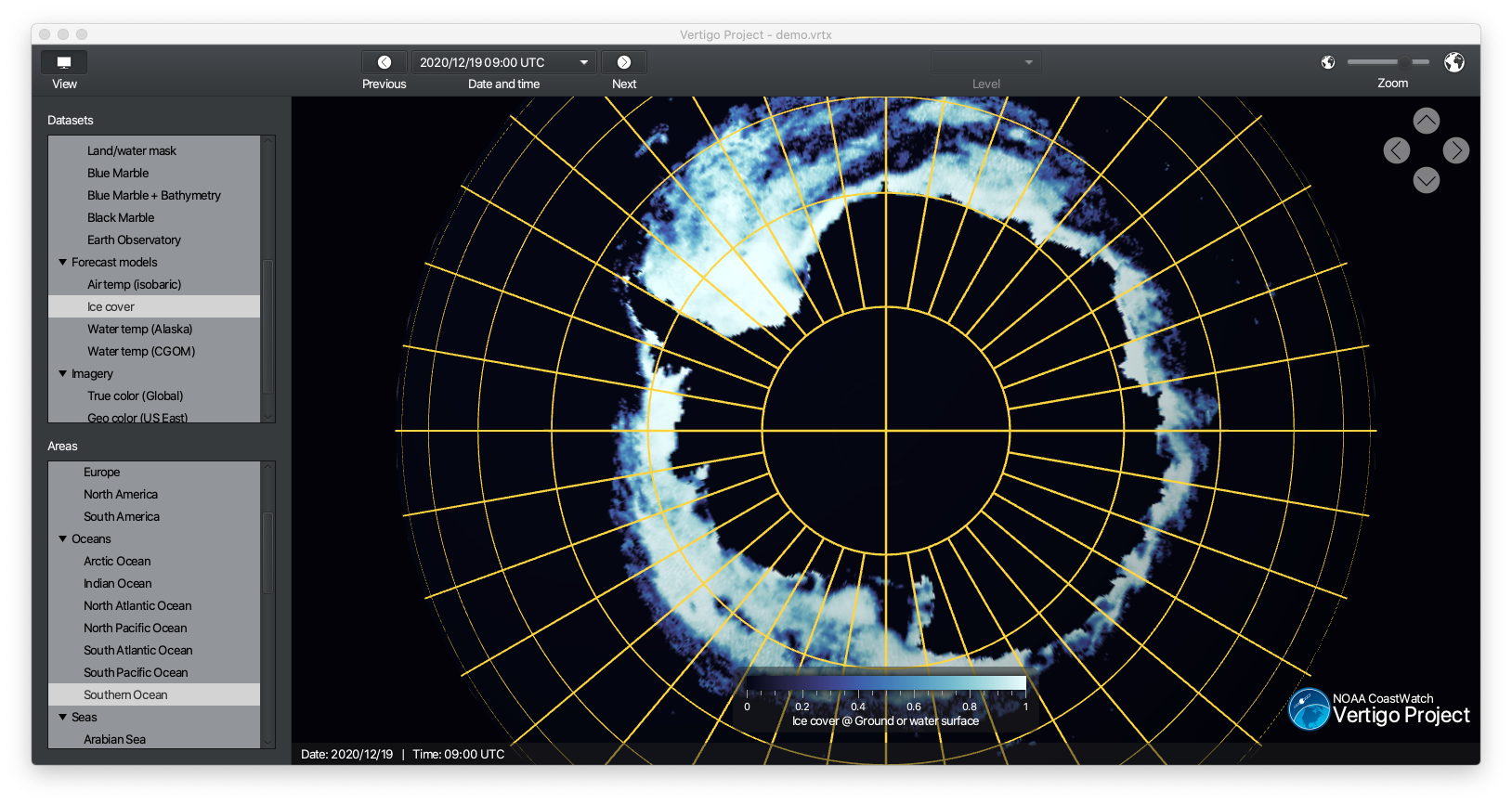
# Packages
Pre-compiled installable packages starting with version 0.7 are available for
Windows, Mac, and Linux under [Releases](https://github.com/phollemans/vertigo/releases). Packages are also
available from the Terrenus [archive](https://terrenus-storage.s3.amazonaws.com/index.html#vertigo/).
# Videos
The YouTube [CoastWatch Vertigo Project](https://www.youtube.com/playlist?list=PL_-bsOLKMYJxlOTJn6E_EUvjBJtSwzYir) playlist contains videos
on installing and using Vertigo to view data, and on Vertigo development.
# Running
To run Vertigo, either install one of the packages listed above which may require
administrator access to your machine, or follow the instructions below for installing OpenJDK and setting `JAVA_HOME`, then skip directly to Step (4) to run Vertigo using the provided script.
# Building
#### Required software:
* OpenJDK 14.0.2 (https://jdk.java.net/archive) -- This can be installed either system-wide
or in a local home directory.
#### Optional software:
* install4j 8 (https://www.ej-technologies.com) -- This is to create and sign installable
packages.
#### Steps:
1) Download the project ZIP file, or clone the repository using Git.
2) Set `JAVA_HOME` to the base JDK directory, for example:
- Linux / macOS: `export JAVA_HOME=${HOME}/jdk-14.0.2`
- Windows: `set JAVA_HOME=C:\Users\%USERNAME%\jdk-14.0.2`
3) To build a runnable distribution file with all dependencies included, use either the
`distTar` or `distZip` Gradle tasks. By default the distribution is built only for the
current platform -- to build for another platform specify
`-Pplatform=win`, `-Pplatform=mac`, or `-Pplatform=linux`. After building, the
distribution file is available in the `vertigo/build/distributions` directory. For
example:
- Linux / macOS: `./gradlew distTar`
- Windows: `.\gradlew distZip`
4) Alternatively, to compile and run Vertigo directly on the current platform:
- Linux / macOS: `./gradlew run`
- Windows: `.\gradlew run`
# Support
General comments and questions should be directed to peter@terrenusearth.com and
coastwatch.info@noaa.gov.